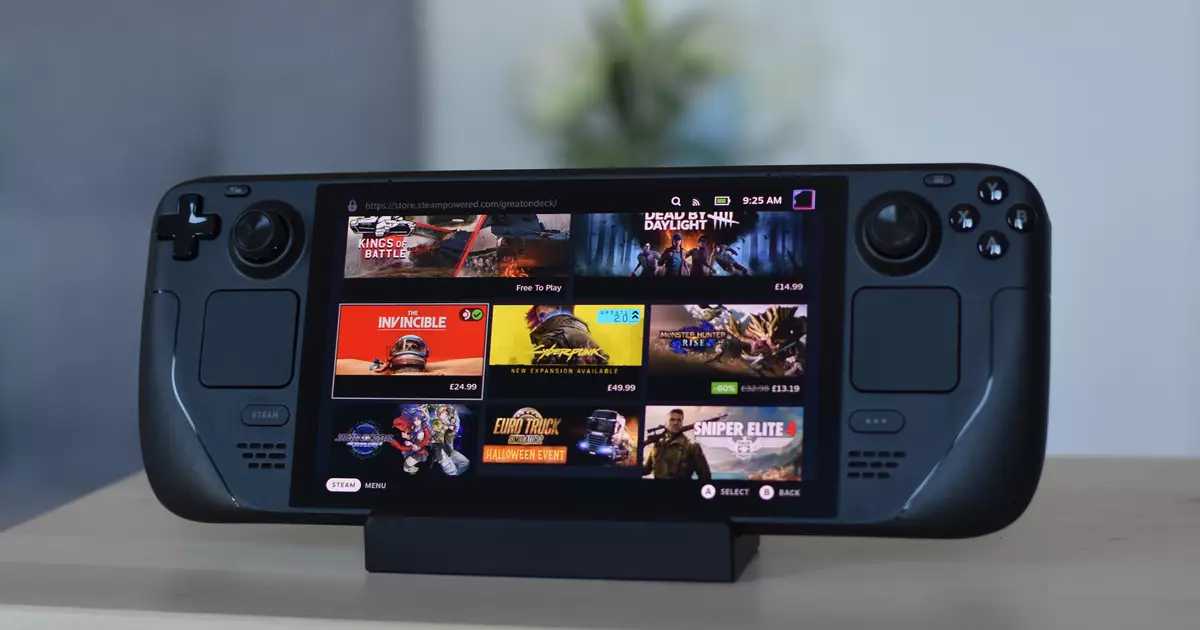The gaming landscape is perpetually in flux, influenced by rapid technological advancements and shifting consumer expectations. In recent news, speculations surrounding Valve’s next hardware venture have emerged, reigniting discussions about the viability of ARM architecture in PC gaming. Following the successful launches of the Valve Index and the Steam Deck, this new development indicates a possible paradigm shift that could reshape the way we interact with gaming hardware.
The Allure of ARM Architecture
Traditionally anchored to x86 architecture, which has long been the standard in gaming PCs, the conversation around ARM technology is gaining momentum. Not only is ARM prevalent in mobile devices, but its recent adoption by entities such as Nintendo and Apple showcases its potential beyond handhelds. ARM processors are known for their impressive power efficiency and superior thermal management, making them attractive candidates for portable gaming devices. If Valve indeed pivots towards ARM architecture, it could mark a significant evolution in how hardware is designed to support modern gaming demands.
Evidence of Valve’s interest in ARM was unearthed by SteamDB, which discovered an application dubbed ‘ValveTestApp3043620.’ This mysterious software is linked to numerous popular PC games, including classics like *Left 4 Dead 2* and modern indie hits such as *Hollow Knight* and *Among Us*. The application’s reference to ‘proton-arm64ec’ suggests that Valve is actively experimenting with a modified version of Proton. Proton is a compatibility layer that facilitates the running of Windows games on SteamOS, and the exploration of its capabilities on ARM64 processors could be an indication of Valve positioning itself for a broader reach in the gaming market.
Speculation surrounding the nature of this new hardware has led to a mix of cautious optimism and skepticism. While it is plausible that Valve might be contemplating a full-scale ARM-powered Steam Deck or wireless VR headset, other possibilities exist, such as expanding support for existing systems like Macs equipped with ARM processors. Such a move could facilitate new gaming experiences, allowing players to access and integrate their favorite mobile titles into their PC libraries more seamlessly.
Nevertheless, it’s essential to consider the implications of such a switch. The most pressing concern is performance compatibility. While contemporary ARM processors boast capabilities that rival x86 counterparts, the overwhelming majority of PC games are optimized specifically for x86 architecture, leading to doubts about performance at scale. Proton’s current functionality hinges on an x86 foundation, and leveraging it for ARM-based systems might require significant alterations. This transition could lead to full emulation, which historically tends to introduce latency and performance drops, frustrating gamers who value snappy responsiveness.
Despite the hurdles associated with transitioning to ARM, potential rewards abound. If Valve can successfully adapt its software to the ARM ecosystem, the ramifications could be profound, not just for Steam users but for the broader gaming community. An ARM-based gaming platform could pave the way for an entirely new user base, particularly among mobile gamers. The integration of Android’s compatibility with ARM could open doors to a plethora of games that were previously inaccessible on traditional PC platforms.
Moreover, the implications of a new generation of Steam Machines should not be overlooked. For years, Valve has demonstrated a commitment to thinking outside the box in the gaming hardware space, and an ARM-driven approach could redefine what users expect from computing for gaming. Although Valve has hinted at a possible extensive timeline for a next-gen Steam Deck, the idea of reshaping its approach to future hardware isn’t too far-fetched given the industry’s ongoing transformations.
To summarize, Valve’s exploratory verge into ARM architecture signifies more than just a technical experiment; it embodies a strategic pivot that could revolutionize the gaming ecosystem. While challenges related to performance and compatibility loom large, the prospect of more power-efficient, versatile gaming hardware is tantalizing for gamers and developers alike. As the industry steadily progresses, Valve’s potential foray into ARM technology could either usher in a new era of gaming or serve as a cautionary tale about the complexities inherent in the pursuit of innovation. Whether this gamble will pay off remains to be seen, but for now, the gaming community watches with bated breath as Valve navigates these uncharted waters.


Leave a Reply
You must be logged in to post a comment.